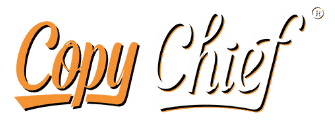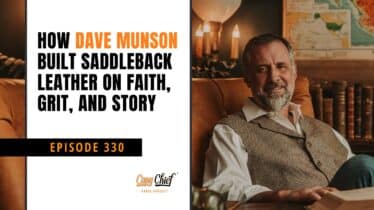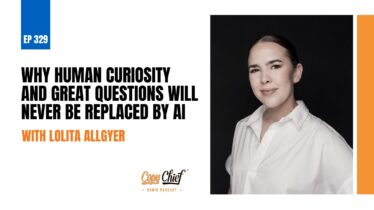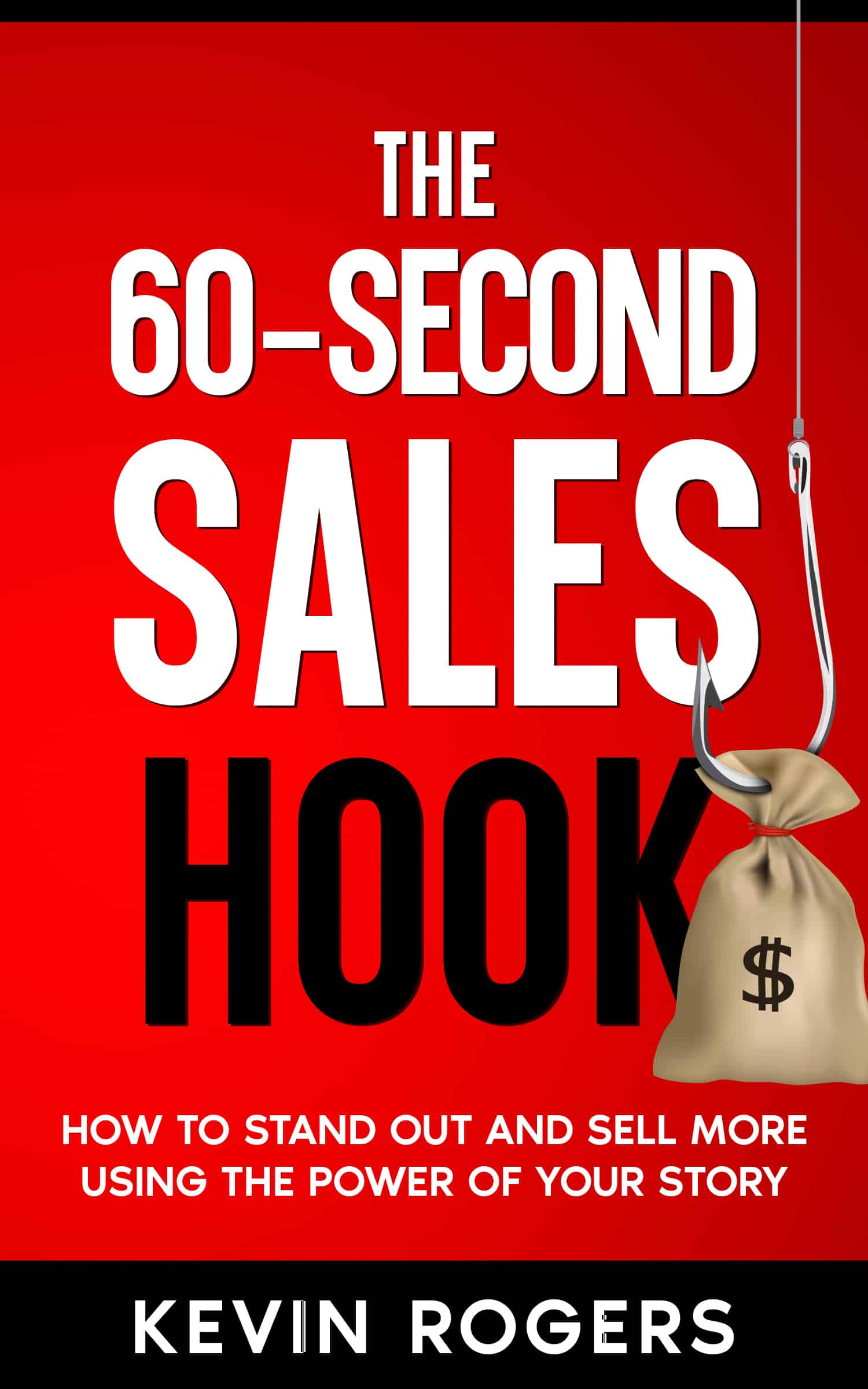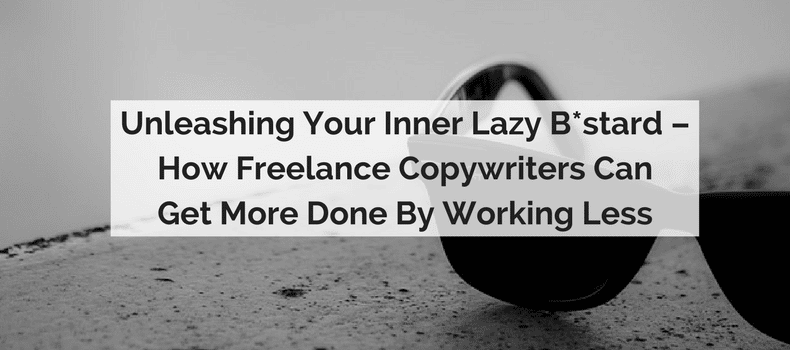
As freelance copywriters, we’re at this weird intersection between ‘creatives’ and ‘craftspeople’…
Because our working practices need to draw from both areas.
Creatively, copywriters must be sensitive to human emotions and highly empathetic…
We have to be regularly inspired to create and develop ‘big ideas’ that resonate with people and help sell our clients’ products…
Because it’s essential to understand who we’re writing/selling to, we spend a lot of time listening, empathising and working with other so-called ‘soft skills’.
But to get the job done, it’s important our approach to our craft is also focused, productive and gritty.
Despite our non-writer friends telling us otherwise (bless ‘em), this isn’t an industry for daydreamers and wallflowers.
Although it’s great for introverts, because prioritising listening over talking is a key copywriting tactic…
But we still have to knuckle down and produce, even when ‘The Muse’ is out to lunch, or ‘Inspiration’ is off whispering in somebody else’s ear.
There’s a lot of work involved: from the research process, right through drafting, editing, testing and optimizing.
Then there’s all the non-copy stuff we have to keep up with:
The acquiring, managing and retaining of delighted clients…
Plus accounting, marketing, admin and the wearing of various freelancer hats – when all you really want to do is dress up like Don Draper or Peggy Olson and watch copy genius shoot from your fingers.
And of course, everyone’s entry to their copywriting career is so different…
We’re former stand-up comics, cartoonists, military veterans and photographers – to name just a few of my own copy contacts’ past lives…
So it can be hard for new writers to know where to start when it comes to developing a working practice that, uh, works.
We’re Constantly Asking Ourselves: What’s ‘Normal’?
Whenever I talk with other copywriters, the conversation invariably turns to working routines…
What does your working day look like?
How many hours are you putting in?
What’s the right balance of actual copywriting vs admin, networking and authority-building – and how do you decide when you wear each of these hats?
Opinions vary widely – everyone seems to have their own process, whether by accident or design…
And of course, what works for you probably won’t apply to the next writer you meet.
We each have to follow our own personal rhythms, paying attention to ‘wild card’ factors that make us unique: attention span, energy levels, office environment (or lack of)…
There’s no ‘off the peg’ process that’s right for every creative worker out there. If there was, you can bet someone would’ve patented it by now and be living on an island they bought as a result.
As copywriters, we’re constantly exposed to new formulas, brain-hacks, creativity-unleashing courses and info-products (good and bad), since our clients and colleagues often work in these fields.
So it can be hard to cut through the noise to get clarity on what actually works for you.
Copywriters Face A Number Of Challenges, Short And Long-term…
Burnout is a risk down the line – but for most of us a more immediate concern is finding a routine that actually improves your productivity and lets you enjoy your life.
(Y’know, the part of your day that isn’t running a copywriting biz).
Personally, I’m interested in how we copywriters transition through 3 broad career stages:
From stage 1: ‘all-day-hustling newbie just getting a grip on the ladder’…
…through stage 2: ‘productive, happy full-time pro with a regular routine’…
…to stage 3: ‘high-paid, in-demand consultant who says NO to 95% of opportunities, working when they want to and charging eye-watering fees’.
I’m not there yet, but stage 3 is the holy grail for many of us.
But is the only way to get there by slugging your way through 12-hour days doing work you don’t love…
…hoping you’re headed in the right direction (because that feeling of exhaustion must mean you’re doing good work)?
Here’s The Shocking Admission That Inspired My Quest…
Copywriting legend and ‘the grizzled veteran’s grizzled veteran’ John Carlton sent an email recently that hit me like an arrow right between the eyes.
He said:
“Know yourself as deeply as possible.
I always knew I was basically a lazy bastard… but with a strong need to produce good work.
And I’ve been stunningly productive throughout my career. I just take off a lot of time.
For you, it’s critical to find the right goal.”
Classic Carlton – cutting right to the truth with a marketing rebel’s instinct.
What he said really resonated with me…
It makes a lot of sense from a freelancer’s standpoint, but isn’t something you’ll hear a lot of successful ‘gurus’ or straight-up business folks admit to.
My own strong need to produce good work is what drives me too – and even when my ‘inner lazy bastard’ rears his ugly head, it’s impossible to ignore this desire to constantly challenge myself.
I know a lot of writers feel the same…
But does that mean squeezing every last ounce of effort out of your brain and body each day, constantly ‘working til you drop’ the way a whip-cracking employer would expect you to?
Or is there a better way to maximise your creative output, and still enjoy plenty of time to surf/skive/spend time with the kids?
Because let’s face it, that’s why a lot of us got into the solopreneur lifestyle.
Over the past few years’ freelancing, I’ve explored various approaches to optimizing my own workday routine – some swiped, some adapted… some more successfully than others.
I recently chatted with Kevin Rogers on Copy Chief Radio about this, and we thought it’d be fun to open up the discussion here on the blog so you can share what works for you, and why, in the comments below.
First though:
Here’s a couple of key ideas that can help you improve your work/life balance, and get the most juice out of your creative tank every day…
Essentialism by Greg McKeown

Essentialism: The Disciplined Pursuit of Less, in author Greg McKeown’s own words:
“…Isn’t about getting more done in less time. It’s about getting only the right things done.
It is not a time management strategy, or a productivity technique.
It is a systematic discipline for discerning what is absolutely essential, then eliminating everything that is not, so we can make the highest possible contribution towards the things that really matter.”
If you’ve ever struggled to decide what needs your attention and what doesn’t…
If you’re someone who says “yes” too much when you know you should be saying “no” (a major symptom of freelancer-itis)…
And if you feel busy more often than you feel productive, then Essentialism can help you mend your wicked ways.
Think of the flipside of Essentialism as the ‘undisciplined pursuit of more’ – basically, not a lifestyle you can pursue for long without driving yourself (and those around you who care about you) doolally.
As freelance copywriters reliant on others for our work, it can be easy to lose control of our own choices, especially when we’re growing our biz and experiencing success…
And when ‘busy’ becomes the goal, it gets even easier to overstep the line into ‘overwhelmed’.
There’s all those podcasts, articles, forum threads and emails you simply have to keep up to date on…
And don’t even get me started on the energy-sapping temptations of social media, and the constant ping of digital notifications and alerts.
(My simple rule: turn ‘em all OFF! It won’t kill you, I promise.)
Sometimes events in our personal lives mean allowing a buffer zone of time & energy for unexpected events or health issues is crucial too.
So Essentialism offers an insight into how innovators and successful creative workers like Clayton Christensen, Stephen Covey, Peter Drucker and Nora Ephron made these key decisions, and demonstrates how you can do the same.
I recommend reading the book to explore McKeown’s process in more detail, but for a quick overview, the ‘Essence of Essentialism’ boils down to mastering three core principles:
- Explore – evaluate your options effectively before committing
- Eliminate – cut out the ‘trivial many’, and learn to say NO
- Execute – don’t force execution, and develop a system/process that allows you to work while repeating the steps at the next decision point
In Essentialism, Greg McKeown reminds us of an important truth:
“The Ability To Choose Cannot Be Taken Away Or Even Given Away – It Can Only Be Forgotten.”
That’s a particular risk for copywriters…
Especially if we don’t pause to look up from our process and evaluate how and what we do, and the decisions WE make (nobody else makes them for you).
Remember: it’s always “I choose to”, not “I have to”…
It’s a subtle but important mindset shift that takes discipline and practice.
To begin with: think deeply about when, where, how and why you work…
Test what feels right for you until you get in a routine where you’re doing your best work – not just ‘getting the most time out of your working day’.
A Quick Personal Recommendation:
Try writing in two or three 99-minute ‘Pomodoro’ creative sessions of 3x 33 minutes a day…
Break for 3-5 minutes max after the first two periods in each session (set a timer, or use focus@will), and for 15 minutes at the end of each 99-minute session.
No checking email social media in this time – in fact, step away from your screen for a couple minutes each break. Break up sessions either side of lunch if you like, it still works.
I’ve been doing this for 2-3 years and it’s really improved my creative focus.
It may take weeks or even months to find your best flow…
But it’ll be worth it once you create focused periods of a few hours a day when you’re truly ‘in the zone’, and still have energy left over for the less creative but still essential stuff.
Some writers do their best work in the mornings, some right after lunch, some are night owls… very few maintain a steady flow of creativity for 8 hours a day, 5 days a week.
So step one in your journey is to admit that, figure out when’s the best time for you to cast your magic – and then stick to it.
Even the famously prolific author Charles Dickens only put in around 5 hours of creative work per day…
Yes, he also found the hours between writing and walking the streets of London (the best research technique of his era) to administrate, network and manage his business & brand…
But he optimized his when/where/how and why for HIM, and defended his process fiercely.
(He even turned down meetings with Queen Victoria – twice – when they didn’t fit his schedule or priorities.
Now that’s an Essentialist!)
So, what do you do when you’re not crafting irresistible sales copy?
Do you worry that every hour not spent studying past masters or researching your market even more will dull your skills?
That’s something another approach can help you with…
Rest by Alex Soojung-Kim Pang

This book’s subtitle is: ‘Why you get more done when you work less’…
Best subtitle ever? Possibly.
But it’s something my high-school teachers and early J.O.B. employers would have scoffed at…
…maybe even thrown the book at my head to wake me up at the back of class, or wherever I was working.
(JK! I never fell asleep at work, I promise.
Ok, maybe once on that summer-holiday supermarket job when I was 17, but that was a one-off. I think…)
But for freelance copywriters, when your time is money – your own, or your client’s – it’s time to get serious.
So if ‘getting more done when you work less’ sounds too good to be true, how to put it to the test?
Writer and consultant Alex Soojung-Kim Pang’s book focuses on how we can harness the power of ‘deliberate rest’, and avoid energy-sapping overwork.
In places like Silicon Valley (where Pang has worked for 15 years, so he’s witnessed what I like to call ‘bro-verwork’ culture up close), overwork has become the norm, as the ‘always-online’ attitude prevails…
And as freelancers we need to protect our schedules – especially if working with people who may assume they’re simply buying our time or round-the-clock access to ‘pick our brains’…
…or who insist we should share their chest-beating enthusiasm for their loud & proud 14-hour workday culture.
Of Course, It’s A Balancing Act…
Sure, Dan Kennedy can insist on being contacted only by fax and then throwing down a five-figure fee to meet a client for a half-day…
But if you’re not yet a proven ‘stage 3’ guru like Kennedy or Carlton, you gotta put in the effort and get consistent results for clients – on time, and as smoothly as possible – before you can start calling those kind of shots.
Rest has plenty of useful insights for copywriters looking to successfully combine the creative, idea-driven part of our gig with the deliver-on-time-every-time professionalism that gets you noticed in a competitive industry…
Pang insists that work and rest are not opposites in the creative schedule – rest is not “the absence of work”.
As the book explains:
“Working better doesn’t mean putting in longer hours. It means working less and resting better.
Whether through daily naps, as Winston Churchill did in the Second World War, spending a week alone in a cabin like Bill Gates, or simply walking or playing a game, ‘deliberate rest’ is the key to getting more done.”
Ok, so the cabin thing may not be so easily available to those of us without access to Bill Gates’ bank account, and napping may get you kicked out of your co-working space…
But there’s plenty of other ways you can improve your output with ‘deliberate rest’.
Social media gives the impression that every other freelancer or entrepreneur is doing something incredibly exciting or productive ALL THE TIME – but don’t believe it.
Sometimes you just have to sit still and plot your next move…
Not very exciting or Instagrammable – but an essential part of the process James Webb Young describes in Copy Chief touchstone A Technique For Producing Ideas.
Here’s a few other insights from Rest to boost your creativity without pulling all-nighters:
1 – Convergent Vs Divergent Thinking
Pang outlines two different kinds of thinking: convergent and divergent.
“Convergent thinking requires seeing connections between apparently different things; divergent thinking requires finding new uses for or meanings in familiar things.”
A convergent thinking task might be finding the common association between 3 apparently unrelated words, like fly, stool and none…
While divergent thinking is more creative & open-ended – so a task might involve coming up with novel uses of a common item like a spoon or a chair, and then grading their results on the basis of originality or flexibility.
Studies show that brief periods of mind-wandering and doing small creative tasks actually boost your creativity for longer than the task itself….
So doing a simple divergent-thinking task when you’re taking a break from writing copy – like a crossword or Sudoku for instance – lets your mind wander, but also stimulates creativity so you’re in better shape when you start work again.
2 – Do It Like Darwin
Charles Darwin wrote The Origin Of Species in just three 90-minute working periods every day – separated by walks, naps and other tasks like correspondence.
He used this schedule to write 19 other books – and always maintained the routine was critical, and never felt ‘lazy’ to him.
Like his fellow ‘Chuck’ Mr Dickens, Darwin believed that maximising the creative brain’s potential was essential…
Neither writer – despite being famously prolific – saw much point in bashing away at their work after their day’s creative energy was spent.
Author and screenwriter Raymond Chandler (The Big Sleep, The Long Goodbye, Double Indemnity) said:
“There Should Be A Space Of Time, Four Hours A Day At Least, When A Writer Doesn’t Do Anything But Write”
Again, this takes discipline to avoid distractions – no Facebook and Twitter in Chandler’s day! – but the point is:
Chandler decided to restrict himself by setting aside a specific amount of time when he would write, and nothing else.
Stephen King does this too, churning out classics like IT in focused 4-6 hour max daily writing (and reading) sessions.
When you’re overwhelmed with admin and emails, it’s good to know you’ve still got a half-day or so blocked-off to do writing you enjoy (and that, y’know, actually pays the bills).
3 – Ernie’s Overnight Pause
Rest includes a great tip from that most iconic of writers, Ernest Hemingway:
“Stop when you’re going good and you know what will happen next. If you do that every day… you will never be stuck…
Your subconscious will work on it all the time.”
I regularly use this tactic when working on copy and articles like this one.
In fact, as often as I can I stop writing overnight in mid-sentence.
That way, even when I snap my laptop shut at 6pm sharp, the rest of that sentence, paragraph, thought or argument is still bubbling away in my subconscious…
It develops while I ‘rest’ during my daily post-work walk or grab a beer with friends.
(Walking itself is a great way to relax and divert the mind – weirdly, studies show that the creative benefits are the same if you walk indoors on a treadmill as outside…
Although outdoor walking will make you much happier and healthier!)
My copy’s being edited and expanded even while I sleep. Sounds weird, but I have to tell you:
It works.
Starting the next morning is so much easier, and helps me hit the ground running.
This ‘overnight pause’ is probably the simplest change you can make to begin optimizing your brain’s ‘deliberate rest’. Give it a try today – don’t be tempted to finish that last sentence!
As Pang says in Rest:
“Learning to stop at the right point in your work encourages a steadier, more sustainable approach to your work, without sacrificing creativity or forcing you to extremes.”
4 – ‘Deep Play’ – A Critical Form Of Deliberate Rest
When we’re kids, play is an essential form of learning. It’s how we refine essential skills – so what happens when we grow up?
Play gets lost in a world of ‘serious stuff’ and career-focused rote-learning. We sometimes forget how to explore, how to approach learning with a sense of wonder and discovery.
‘Deep play’ helps us tap into those ideas once more. It gives us more than simply distraction or respite from work – it can also help us be more creative.
Pang says deep play is about more than just playing a game…
“When it’s competitive it has high symbolic states… when it’s personal it offers lasting benefits and satisfaction.
In creative lives, activities become deep play when they have at least one of four features…”
Here’s how Pang defines the 4 key characteristics of successful deep play activities:
- They’re mentally absorbing
- They offer new context to some skills used in your work
- They have different, clearer rewards than work due to differences in ‘domains’ (different media, scale or pace)
- They provide a living connection to the player’s past, for instance a personal connection to childhood, family or memory
So, what are some examples of deep play that copywriters can do to enhance their creativity?
Rest outlines a few examples, like sailing, climbing, painting (a favourite of strategic napper Winston Churchill), playing a musical instrument, and games like chess or billiards (think old-school pool).
Deep play activities require focus, or an attention to strategy – less mentally absorbing exercises like running or workouts are aren’t as effective…
There has to be an element of mental challenge or the prospect of failure for deep play to be most rewarding.
A key factor is using a different physical approach, tool or medium from that which is used in your regular work…
Take Churchill’s painting for example: it got him away from the strategies of war and politics, and took his eyes and brain off tables covered in maps and directions for a while.
So the message for copywriters and marketers is clear: get away from the screens and keyboards for your deep play!
Now It’s Over To You…
What activities and practices do you use to enhance your creativity?
What do you do between writing sessions, or at the start and end of your workday to optimize your output?
Do you take an Essentialist’s approach to your work choices? Or is there something you’re desperate to focus more on at the expense of something less important, but are struggling to kick the habit?
I’d love to hear your tips for getting more done by working less – so share ‘em with your fellow copywriters and creatives in the comments below!
